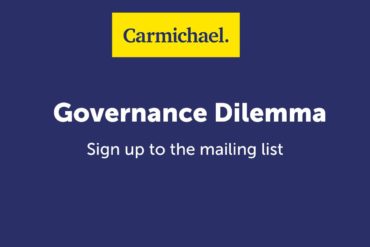Target Audience
This AI Awareness training course is designed for volunteers, staff, and managers who use or intend to use AI-powered systems, tools or applications in their work. It is also for board directors and senior managers who are tasked with developing and implementing AI related policies in their organisations, and in particular Acceptable AI Usage Policies.
Outline
Since February 2nd, 2025, employers must ensure that employees using AI systems have adequate AI literacy. Organisations must also ensure that the use of AI systems in the workplace is transparent. Hence, this eLearning resource is structured as a Level 1 awareness raising course comprising eight component parts.
This course aims to:
- help you develop a solid understanding of what Artificial Intelligence (AI) is and its future potential;
- look at ways you might typically deploy or use AI systems, tools and applications in your work;
- provide you with an overview of the European Union AI Act 2024;
- outline how an Acceptable AI Usage Policy might be developed and implemented to raise AI awareness among staff members.
Course Structure
The course takes approximately 1.5 hours to review. This course can be accessed for up to 90 days after purchase. Topics are self-contained to facilitate micro-learning for the time conscious participant.
Lesson 1: The Evolution of AI
We chart how AI has evolved, particularly since 1950. We learn about Turing Tests and some of the pioneering programmes that laid the foundations for AI as we know it today.
Lesson 2: AI Applications
AI now plays a crucial role in numerous business sectors, enhancing efficiency and improving customer experiences. We consider this topic from the perspective of AI’s use in addressing societal challenges. We also consider how AI is supporting individuals in their everyday lives.
Lesson 3: AI Driven Productivity
AI is helping to transform the way we work, impacting the business processes, tools and applications we rely on to help us carry out our job roles. We consider how common tools and applications such as ChatGPT, Microsoft Copilot, Canva and Leonardo are used and the importance of writing effective prompts when using generative AI.
Lesson 4: AI Regulatory Compliance
We explore the implications of the European Union AI Act 2024 and why regulatory compliance is necessary to safeguard the development of AI systems into the future.
Lesson 5: Ethical AI Policy Development
In this topic, we take a practical look at how managers might develop an Acceptable AI Usage Policy to help safeguard the deployment and use of AI systems, tools and applications in the workplace. Participants may download sample policy templates upon completion of this lesson.
Lesson 6: AI Security
Deploying AI systems, tools, and applications comes with a range of risks. In lesson 6, we consider some of these risks and actions that may help to mitigate systems failures, data security breaches and the unethical use of AI.
Lesson 7: AI Future Trends
In this topic, we look to the future. We consider how our use of AI-powered tools and applications will further evolve over time, particularly as Custom GPT become commonplace.
Lesson 8: Final Course Quiz
Upon successfully completing the course, participants may download free of charge a course Certificate of Completion.
Note: Once an e-Learning course is booked, it could take up to 48 hours for login details to be provided.
Additional Note: When booking, please make sure to input all the correct contact details onto the booking form as the information will be used to create learner profiles. Should information be entered incorrectly it could delay the booking process.
Learners from outside the Republic of Ireland are advised to contact training@carmichaelireland.ie before booking, in order to ensure proper access to the course.
Target Audience
Anyone that has no prior knowledge of Microsoft Excel and would like to learn it.
Outline
The Quick Start Excel course provided to Carmichael from Anne Walsh (The Excel Lady) is a one-hour course designed to give the learner a good foundation how to start using Microsoft Excel, an increasingly powerful tool in the workplace for day-to-day logging of data as well as production and maintenance of reports. Learning is further enhanced with simple quizzes and training exercises to help the participant to commit their learning to memory.
Course Structure
The course comprises ten topics, with short videos and takes approximately one hour to complete.
Introduction: Meet your trainer
Topic 1: First Things First – Know Your Keyboard
1.1 Identify these keys: Ctrl, Shift, Enter, Backspace, Delete
1.2 Know your F4 key and the Fn key
1.3 Get out of jail keys: Learn ESC and Undo.
1.4 Quiz on knowing your keyboard
Topic 2: Say Hello to Excel
2.1 Open Excel
2.2 Identify rows, columns and cell references
2.3 Try out the ribbon – notice the tool tips
2.4 Quiz on Say Hello to Excel
Topic 3: Working with your Files
3.1 How to save a file
3.2 How to open a file you have already saved
3.3 How to pin a file so you can access it again
3.4 How to save a file with a new name
3.5 Module 3 – Resources
Topic 4: Entering and Breaking
4.1 Practice entering numbers and undo – notice they are on the right
4.2 Practice entering text and undo – notice they are on the left
4.3 Practice entering dates and undo.
4.4 Module 4 – Practice
Topic 5: Know How to Use your Mouse
5.1 Copying down and across (black cross and white cross)
5.2 Help, I don’t have a cross
5.3 Module 5 – Practice
Topic 6: Copying and Formatting
6.1 Entering, copying and formatting a day/month
6.2 Entering, copying and formatting numbers
6.3 Entering, copying and formatting dates
6.4 Module 6 – Practice
Topic 7: Cut, Copy and Paste
7.1 Enter some text and move it by cutting and pasting – ribbon and keyboard
7.2 Enter some text and copy it by copy and paste – ribbon and keyboard
7.3 Enter some dates and experiment with moving/copying
7.4 Module 7 – Practice
Topic 8: Meet Some Formulas
8.0a How to download the file
8.0b Download this file first
8.1 Enter two numbers and add them together, then copy them down
8.2 Enter two numbers and subtract from each other, then copy them down
8.3 Enter two numbers and multiply them together, then copy them down
8.4 Enter two numbers and divide them, then copy them down
8.5 Fixing a Cell
8.6 Quiz on Formulas
Topic 9: Data Setup
9.0a How to download the file
9.0b Download this file first
9.1 Rules about data entry
9.2 How to set up a list
9.3 How to do a basic sort
9.4 How to do a basic filter and clear it
9.5 Module 9 – Resources
9.6 Quiz on data entry
Conclusion
Upon completion of the course, the participant can request a Certificate of Completion by emailing ce.training@carmichaelireland.ie.
Note: Once an e-Learning course is booked, participants will receive instructions on how to log on.
Learners from outside the Republic of Ireland are advised to contact training@carmichaelireland.ie before booking, in order to ensure proper access to the course.
Target Audience
Anyone needing a better understanding of how to plan a trading income strategy for their organisation.
Outline
Welcome to the Trading Income Strategy course. This course is designed for non-profit organisations who generate trading income. Such organisations may include community and voluntary groups who wish to generate additional income through charging for community supports and services; social impact organisations who are on a journey towards financial self-sustainability; and, social enterprises.
In this course, we will use a common and collective term to cover all organisations who currently or plan to generate trading income. The collective term we will use to describe all organisations is ‘social enterprises’.
Course Structure
Key topics covered during the course include:
- From Activities and Outputs to Outcomes and Impact
- Developing and Using a Theory of Change
- Business Models
- Funding Models
- ESG Impact Investing
- Scaling Opportunities
- Asset Utilisation Strategy
- Selecting a Viable Business Strategy
- Integrating Impact Management and Business Strategy
- Implementing Business Strategy and Achieving Social Impact
Upon successfully completing the course, participants may download a course Certificate of Completion.
Note: Once an e-Learning course is booked, it could take up to 48 hours for login details to be provided.
Additional Note: When booking, please make sure to input all the correct contact details onto the booking form as the information will be used to create learner profiles. Should information be entered incorrectly it could delay the booking process.
Learners from outside the Republic of Ireland are advised to contact training@carmichaelireland.ie before booking, in order to ensure proper access to the course.
Target Audience
Anyone needing a better understanding of how to conduct an internal analysis for a non-profit organisation.
Outline
Non-profit organisations play a pivotal role in the delivery of services and supports in Ireland. Beneficiaries can speak first hand of the positive impact these supports have on their lives. Non-profit organisations compete with a wide range of other companies and entities in a bid to generate trading income. The challenge in such instances is to generate financial returns without comprising social outcomes and impact.
This course is designed to explore the factors at play within a non-profit organisation that influence decisions concerning business strategy and the nature of social impact pursued.
Course Structure
The course has seven lessons and should take approximately 1 hour to complete.
The topics which are covered in this course:
- SWOT Analysis
- Drivers of Change
- Cost Analysis
- Review of Assets
- Assessing Capacity
- Leadership Priorities
- Succession Plans
Upon successfully completing the course, participants may download a course Certificate of Completion.
Note: Once an e-Learning course is booked, it could take up to 48 hours for login details to be provided.
Additional Note: When booking, please make sure to input all the correct contact details onto the booking form as the information will be used to create learner profiles. Should information be entered incorrectly it could delay the booking process.
Learners from outside the Republic of Ireland are advised to contact training@carmichaelireland.ie before booking, in order to ensure proper access to the course.
Target Audience
Anyone needing a better understanding of how to examine the external environment of a non-profit organisation for planning purposes.
Outline
Organisations play a pivotal role in the delivery of services and supports in Ireland. Beneficiaries can speak first hand of the positive impact these supports have on their lives.
Organisations compete with a wide range of other companies and organisations in a bid to generate trading income. The challenge in such instances is to generate financial returns without comprising social outcomes and impact.
This course is designed to explain how to analyse the external business environment in which an organisation operates.
Course Structure
The course has seven lessons and should take approximately 1 hour to complete.
The topics which are covered in this course:
- Environmental Analysis – PESTEL
- Competitor Analysis
- Market Analysis
- Municipal Authority Plans
- Government Policy
- EU Policy initiatives
- Funder Priorities
Upon successfully completing the course, participants may download a course Certificate of Completion.
Note: Once an e-Learning course is booked, it could take up to 48 hours for login details to be provided.
Additional Note: When booking, please make sure to input all the correct contact details onto the booking form as the information will be used to create learner profiles. Should information be entered incorrectly it could delay the booking process.
Learners from outside the Republic of Ireland are advised to contact training@carmichaelireland.ie before booking, in order to ensure proper access to the course.
Target Audience
New Board Members, Directors, Charity Trustees of non-profit organisations.
Outline
Becoming a member of a non-profit board is a rewarding and at times challenging task. Understanding the role and responsibilities of a board member makes the job easier. In this eLearning course we provide you with a structured sequence of topics, each of which is designed to further your knowledge of corporate governance and support your understanding of your voluntary board role.
This course can be accessed for up to 60 days after purchase.
Course Structure
The course comprises eight lessons and takes approximately three hours to complete.
Lesson 1: Governance Overview
Lesson 2: Board Member Roles and Responsibilities
Lesson 3: The Chairperson
Lesson 4: Board Relationship with CEO/Staff
Lesson 5: Company Limited by Guarantee
Lesson 6: Charities and Charity Trustees
Lesson 7: Getting the most from Board Induction
Lesson 8: Why Boards Underperform
Upon completion of the course lessons, you may wish to complete the course quiz. Successful completion of the course quiz provides you with an opportunity to download a Certificate of Completion.
Note: Once an e-Learning course is booked, it could take up to 48 hours for login details to be provided.
Additional Note: When booking, please make sure to input all the correct contact details onto the booking form as the information will be used to create learner profiles. Should information be entered incorrectly it could delay the booking process.
Learners from outside the Republic of Ireland are advised to contact training@carmichaelireland.ie before booking, in order to ensure proper access to the course.
Target Audience
New Board Members, Directors, Charity Trustees of non-profit organisations.
Outline
Many thousands of non-profit organisations in Ireland are also registered charities. This means these organisations meet ‘The Charity Test’ and can thus be entered onto the register of charities in Ireland by the Charities Regulator.
The board members of non-profit organisations that are also registered charities are referred to as charity trustees. A list of the trustees for each registered charity in Ireland is publicly viewable on the Charities Regulator website.
Charity trustees must ensure that their charities comply with their obligations under the Charities Act 2009 and the related reporting and compliance obligations set out by the Charities Regulator.
This course can be accessed for up to 60 days after purchase.
Course Structure
In this course, we have created an overview of what a trustee should be aware of when joining a charity board. The course comprises five lessons and takes approximately one hour to complete.
Lesson 1: The Charities Act 2009
Lesson 2: Functions of the Charities Regulatory Authority
Lesson 3: General duties of charity trustees
Lesson 4: The Charities Governance Code
Lesson 5: Charity compliance requirements
Lesson 6: Charities Amendment Act 2024
Upon completion of the course lessons, you may wish to complete the course quiz. Successful completion of the course quiz provides you with an opportunity to download a Certificate of Completion.
Note: Once an e-Learning course is booked, it could take up to 48 hours for login details to be provided.
Additional Note: When booking, please make sure to input all the correct contact details onto the booking form as the information will be used to create learner profiles. Should information be entered incorrectly it could delay the booking process.
Learners from outside the Republic of Ireland are advised to contact training@carmichaelireland.ie before booking, in order to ensure proper access to the course.
Target Audience
Anyone working in Social Enterprise who would like to create positive impacts in their beneficiaries lives.
Outline
Social enterprises play a pivotal role in the delivery of services and supports in Ireland. Beneficiaries can speak first hand of the positive impact these supports have on their lives.
Social enterprises compete with a wide range of other companies and organisations in a bid to generate trading income. The challenge in such instances is to generate financial returns without comprising social outcomes and impact.
This course is designed to put social impact at the heart of business planning and conversations around social enterprise development.
Course Structure
Section 1: External Environment in Context
This section explains how to analyse the external business environment in which a social enterprise operates. To that end several topics are explored:
- Environmental Analysis – PESTEL
- Competitor Analysis
- Market Analysis
- Municipal Authority Plans
- Government Policy
- EU Policy initiatives
- Funder Priorities
Section 2: Internal Analysis
In this section, we explore the factors at play within a social enterprise that influence decisions concerning business strategy and the nature of social impact pursued. The topics we cover here are:
- SWOT Analysis
- Drivers of Change
- Cost Analysis
- Review of Assets
- Assessing Capacity
- Leadership Priorities
- Succession Plans
Section 3: Social Enterprise Strategy
This section considers the options that social enterprises have when setting business direction. Key topics covered include:
- From Activities and Outputs to Outcomes and Impact
- Developing and Using a Theory of Change
- Business Models
- Funding Models
- ESG Impact Investing
- Scaling Opportunities
- Asset Utilisation Strategy
- Selecting a Viable Business Strategy
- Integrating Impact Management and Business Strategy
- Implementing Business Strategy and Achieving Social Impact
Section 4: Marketing
This final section of the course provides an overview of the importance of branding in helping a social enterprise to communicate the value that it delivers. Topics covered include:
- Identifying Brand Values
- Developing a Social Enterprise Brand that Communicates Social Outcomes and Impact
- Developing a Value Proposition Statement
- Developing Effective Market Development Plans
- Maximising Income Generating Opportunities
Upon successfully completing the course, participants may download a course Certificate of Completion.
Note: Once an e-Learning course is booked, it could take up to 48 hours for login details to be provided.
Additional Note: When booking, please make sure to input all the correct contact details onto the booking form as the information will be used to create learner profiles. Should information be entered incorrectly it could delay the booking process.
Learners from outside the Republic of Ireland are advised to contact training@carmichaelireland.ie before booking, in order to ensure proper access to the course.
Target Audience
Anyone looking to learn about good practice in carrying out the Role of Treasurer in a non-profit organisation.
Outline
Appointing a board member to the role of Treasurer is important for a non-profit board. Typically, most board and committee members do not come from financial backgrounds. It is therefore helpful to have at least one member of a Board who understands, and is capable of, communicating to board members the implications of financial decisions taken in the organisation.
Please note that in this course, we will use the term Board to cover non-profit boards and management committees alike. We will use the term ‘organisation’ to cover all types of non-profit entities including companies limited by guarantee, voluntary groups, co-operatives and unincorporated associations.
This course can be accessed for up to 60 days after purchase.
Course Structure
The course is divided into 7 component parts and takes approx. 1.5 hours to 2 hours to complete. Participants should allow for additional time to review the templates which accompanies the course. Topics are self-contained to facilitate micro-learning for the time conscious participant.
1. The Role of Treasurer in Context
In this lesson, we learn about the duties attaching to the role of Treasurer and the collective responsibilities of a non-profit board.
2. Monitoring Income and Expenditure
In this lesson, we consider the important role the Treasurer plays in helping a non-profit Board to effectively monitor income and expenditure in an organisation.
3. Communicating with Non-Financial Board Members
In this lesson, we consider how financial information can be more practically conveyed to board members at meetings using financial dashboards.
4. Managing Financial Risk
In this lesson, we consider the actions a board needs to take to manage financial risk and the practical support a Finance Sub-committee can provide to a board.
5. Planning Budgets and Cash Flow
In this lesson, we take a practical look at the work involved in developing budgets and cash flow projections to help guide performance expectations in an organisation.
6. Crafting Financial Policy and Procedures
In this lesson, we consider the type of financial procedures that may be required to help Boards and managers exert adequate financial control in their organisations.
7. Working with Stakeholders
In this lesson, we consider the range of stakeholders that an organisation supports and works with and the implications for the Treasurer.
Upon successfully completing the course, participants may download free of charge a course Certificate of Completion.
Note: Once an e-Learning course is booked, it could take up to 48 hours for login details to be provided.
Additional Note: When booking, please make sure to input all the correct contact details onto the booking form as the information will be used to create learner profiles. Should information be entered incorrectly it could delay the booking process.
Learners from outside the Republic of Ireland are advised to contact training@carmichaelireland.ie before booking, in order to ensure proper access to the course.
Test test test



